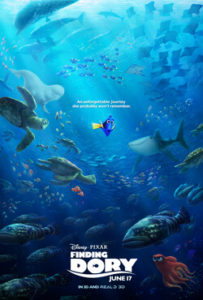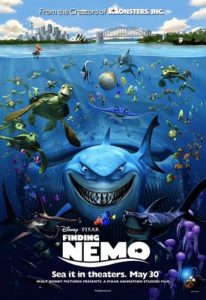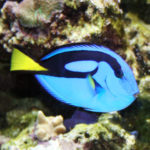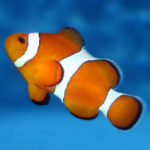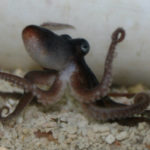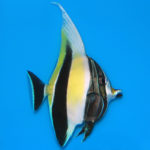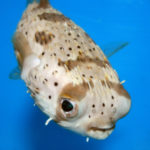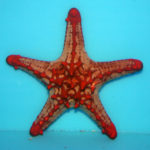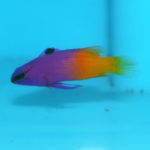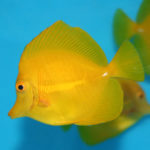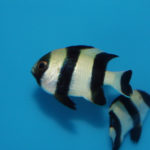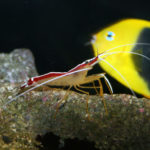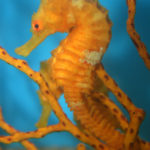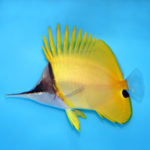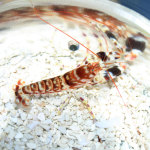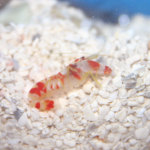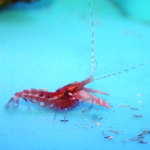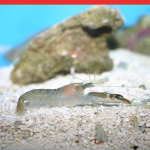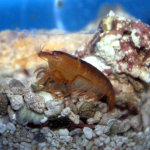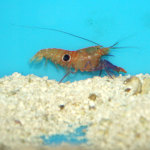
Knowing where to start and stop when it comes to writing about invertebrates is a real problem – any single group could keep one occupied for a lifetime. Today I’d like to highlight some interesting facts concerning a few commonly kept types and their relatives. I’ll add to this from time to time.
General
Invertebrates (animals without backbones) account for approximately 97% of the world’s animal species, yet we have no idea of their total numbers. The smallest are invisible to the naked eye while the largest, giant squid, may exceed 60 feet in length.
Nearly every injectable drug manufactured in the USA is tested for bacterial contamination with a chemical extracted from horseshoe crab blood (synthetics do not work as well). Several states are restricting the collection of these animals (often used as fertilizer!) and requiring that they be released after blood specimens are taken.
Invertebrates have colonized every habitat imaginable, from freezing Antarctic seas to the boiling hot water of geysers. The sponges, crabs, tubeworms and others living near deep sea vents form the only animal community that does not rely upon photosynthesis as the basis of the food chain (bacteria that consume methane function as “plants”).
Despite being a creature of legend for centuries, the giant squid, Architeuthis sp., was not captured on film until 2004. Two years later, the same Japanese scientists that filmed the animal caught a specimen on a fishing line, thus giving the world its first view of a living giant squid.
Eating and Being Eaten
Despite radically different appearances, jellyfishes, sea anemones and corals are closely related (Phylum Cnideria). All gather food and excrete wastes through a common opening, and overcome their prey with stinging cells.
Jellyfish, although comprised largely (95%) of water, are able to snare prey as large as small fishes. Surprisingly, they form the bulk of the diet of many huge sea creatures, including the world’s biggest turtle, the leatherback.
The dried krill (shrimp-like creatures of the Class Brachiopoda) that you may use as fish food form the basis of the food chain in most of the world’s oceans. Also, a number of surprisingly large creatures, including whales, manta rays and basking sharks, rely upon krill as their primary diet, consuming billions each day.
Although viewed by most as sluggish creatures, many of the world’s 70,000+ species of snails and slugs (Phylum Mollusca) are quite effective predators. Various types pry open or drill through clam shells and cone snails impale fish by shooting out barbed tongues. Certain sea slugs consume anemones and incorporate the stinging cells into their own gill tufts.
Reproduction
Australia’s Great Barrier Reef, the world’s largest, is 1,250 miles long. Somehow, its untold billions of individual coral animals synchronize reproduction so that the sperm and eggs of all are released into the sea at the same time.
Banded coral shrimps, Stenopus hispidus, form long-term pair bonds, and males have been observed to share food with gravid (pregnant) females. The eggs, which are glued to the females’ swimmerets (feathery structures below her abdomen), are aerated and protected by her. Upon hatching, howe ver, the young may be consumed by both parents!
ver, the young may be consumed by both parents!
Surviving
Sea cucumbers make interesting if occasionally unsettling aquarium inhabitants – when disturbed, they discharge their stomachs through the anus! Amazingly, these sea star relatives can regenerate the discarded stomach.
The unique tube feet of sea stars (Phylum Echinodermata) function in locomotion, respiration and as sensory organs. Water-filled canals linking the feet can, via a series of valves, build up enough pressure to enable sea stars to pry open clam shells (try that with your hands!).
The anemone hermit crab, Parurus prideauxi, places a stinging sea anemone on its shell as protection and camouflage and re-locates it when changing shells. The anemone, in turn, gets a safe anchoring place and, perhaps, access to leftovers from the crab’s meals.
Using Invertebrates – Now and Then
Over 10,000 species of sponges (Phylum Porifora) inhabit both fresh and salt water. Several types have been collected from the Mediterranean Sea since ancient times. After drying in the sun, their fibrous structural tissue (spongin) made an excellent bath sponge.
Horseshoe crabs (Phylum Chelicerata) are among the world’s most ancient creatures and have remained relatively unchanged for over 300 million years. Closely related to spiders and not crabs at all, small specimens make interesting additions to a marine aquarium.
And, Finally…An Odd Personal Tale
Octopuses (Class Cephalopoda) are the most intelligent of the invertebrates and make fascinating aquarium subjects. They are also quite well-sighted – one I kept would, according to my grandmother, “stare” at her while she worked in the kitchen. Not wishing to upset my beloved pet, she covered its tank when preparing octopus for dinner!
Well, only a few billion more facts to go! I’ll continue next week, and periodically after that. As there are so many possibilities, I would greatly appreciate your suggestions concerning invertebrate-oriented subjects that you may wish to learn more about. Thanks, until next time, Frank.
You can learn a great deal about invertebrate biology at the web site of the Australian Museum:
http://www.amonline.net.au/invertebrates/ara/index.htm
 That Fish Blog – Aquarium Advice and Information
That Fish Blog – Aquarium Advice and Information




